Discover Delhi – and unlock the fascinating history of one of India’s oldest cities
A kaleidoscope of ancient heritage, colonial charm, and metropolitan suburbs, Delhi, the national capital of India is a blend of many worlds. The city is an amazing paradox of tradition and modernity.
In its essence, Delhi cannot be stereotyped. It is at once cosmopolitan, bold, and resilient. Everywhere, whether it is in the meandering alleys and nooks of Old Delhi or broad avenues of Lutyen’s Delhi, there is a sense of the city’s vibrant past. With a history that dates back many centuries, Delhi showcases an ancient culture that is evident in its many monuments, tombs, and forts.
Relive Delhi’s rich heritage as you check out these iconic marvels from the past.
Which city has 3 Unesco World Heritage Sites?
The answer is Delhi – home to three stunning Unesco World Heritage Sites – Qutub Minar’s 73 meters tall minaret; Humayun’s Tomb with its delightful gardens and geometric beauty; plus Red Fort Complex which stands testimony to Mughal ingenuity. Explore these magnificent places even as you amble through this ancient city and discover many more historic sites.
Red Fort
A fine example of Mughal architectural brilliance, Red Fort is a 17th-century creation that has been the prime facia of the capital since historic times. The fort was built by the great Mughal ruler Shah Jahan and today it stands as a UNESCO-approved World Heritage Site.
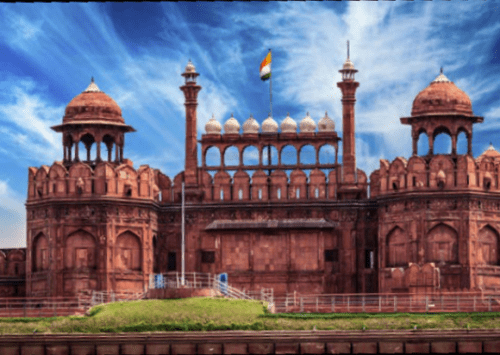
Located in Old Delhi, the red sandstone marvel is a hub for hundreds of tourists who flock to the capital every day. It is best to visit the fort in the evening when the specially arranged ‘Light and Sound show’ depicting the fort’s historic events, takes place inside the complex.
Humayun’s Tomb
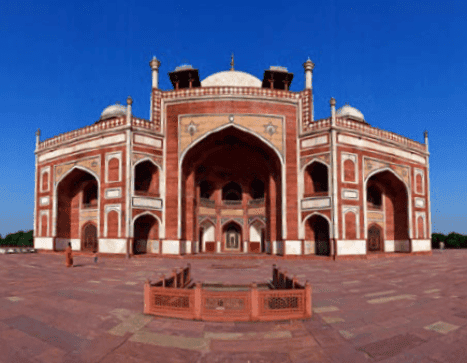
Completed in 1572, Humayun’s tomb is reputed among the very first of the grand Mughal mausoleums in India and is a Unesco World Heritage Site. As the name suggests, the tomb was built in memory of the great Mughal emperor Humayun by his loving wife Bega Begum. The tomb reflects a beautiful amalgamation of Persian, Indian, and Turkish styles of architecture in its design, which when blended with the sprawling green lawns around it, creates a picture-perfect impression.
Important buildings to be explored in the complex are Arab Sarai, Bu Halima, and Nila Guba. All these, when clubbed with the other 150 tombs, earned the complex the title of the ‘Dormitory of the Mughals’.
Humayun’s tomb is located in the vibrant vicinity of the Nizamuddin Dargah and like several other Mughal structures in Delhi, is counted among UNESCO’s list of World Heritage Sites.
India Gate
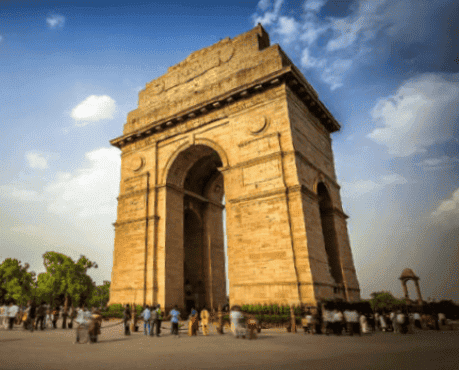
India Gate is an iconic war memorial that was built in commemoration of 82,000 Indian soldiers who sacrificed their lives fighting for the British in the First World War.
The National war memorial stands 42m high and resembles the famous Arc-de-Triompe in Paris.
Designed by the renowned British architect Sir Edwin Lutyens, India Gate has its walls decorated with the names of martyred British and Indian soldiers. The magnificent structure is located in the center of Delhi, astride the prominent Rajpath road, making it an integral part of the National Republic Day parade in the capital.
Opened at all hours of the day, the war memorial gets completely floodlit with colored lights at night, making the visit a delightful affair.
Jama Masjid
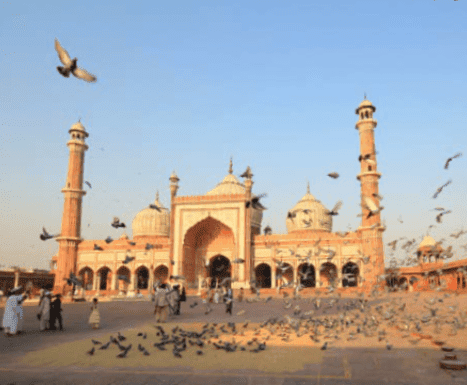
Jama Masjid, in the heart of Old Delhi, is another enchanting creation by the art connoisseur and Mughal ruler Shah Jahan.
The Jama Masjid mosque, which is also known to be the largest in India, towers over the whole of Old Delhi, yet stands apart from its buzzing surroundings.
The magnificent mosque stands on a massive rocky platform with flights of stairs from three directions, leading to three entrance gates. Its sanctum sanctorium is in the center, facing the west (in the direction of the holy Mecca). Built sometime in the mid-17th century, the mosque holds great significance for the Islamic world and is inundated by a large number of Muslims during auspicious occasions.
Considered one of the most impressive Mughal monuments and the very last to have been built by Shah Jahan, Jama Masjid reflects the true architectural charm of the mighty Mughals.
Qutab Minar
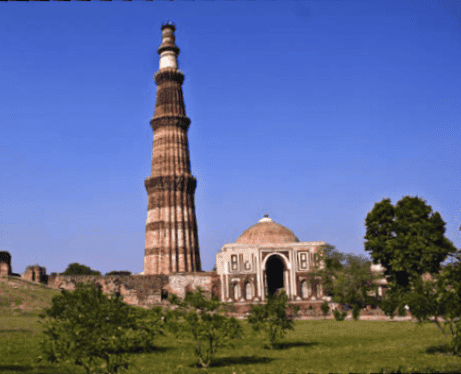
An epic example of the glorious Sultanate era in Delhi, Outab Minar stands as the tallest brick minaret in the world.
It has its history dating back to the 12th century when the Turk ruler Qutb-ud-Din Aibak laid its foundation to celebrate the beginning of Muslim rule in the country. Elegantly built of red sandstone and marble, the Minar represents Indo-Islamic architecture at its finest.
Besides the tower, the complex houses other historically significant monuments as well.
This includes the Iron Pillar of Delhi, Quwwat-ul-Islam Mosque, Tomb of Iltutmish, and Tomb of Imam Zamina.
Counted among the prominent tourist attractions of the country, Qutab Minar, a UNESCO World Heritage Site resides in the Mehrauli region of Delhi.
The city never fails to mesmerize its tourists and is an absolute delight for anyone who visits this city. As it portrays the perfect blend of both ancient and contemporary life, there is beauty in almost all its corners. The city has a rich history that dates back many centuries, evident in its various heritage monuments such as Lal Kot/Qila Rai Pithora, Purana Qila, Humayun’s Tomb, Jama Masjid, Safdarjung’s Tomb, and more – monuments that have a unique tale to share.
To get the most out of your visit to Delhi, explore the city’s heritage sites and take a journey through time! Who knows what secrets they might unveil!
Read more: Discover Your India



